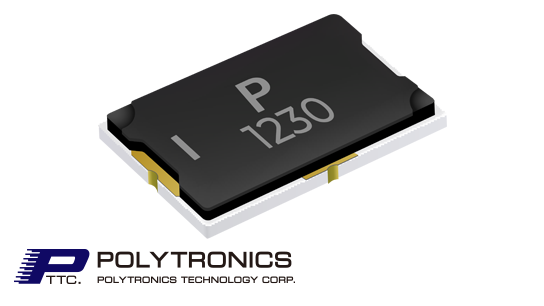Three-terminal current limiting modules from Polytronics now in stock at Schukat
3-pole SMD fuses with resistive heating element

Electromechanics I 25.09.2024
We have added new CLM series SMD fuses from Taiwanese manufacturer Polytronics Technology Corp to our product portfolio. These current limiting modules (CLM) are surface-mountable 3-pole chip components able to protect against both overcurrent and overload, containing a fuse element that ensures stable operation at normal current and cuts off current flow in the event of overcurrent. The fuse comprises a resistive heating element that can be used in combination with a voltage detector such as an IC or FET. If an overvoltage is detected, the heating element is electrically energised to generate heat and burn through the fuse element, achieving overvoltage protection.
The SMD fuses in Polytronics’ CML series offer fast response times and are halogen free in line with IEC 61249-2-21:2003. They are specified for operating voltages of 36V, 62V and 80V DC and rated currents of 5A, 12A, 15A, 22A, 30A, 45A and 60A, while their robust glass-epoxy housing can handle operating temperatures from -10°C to +65°C. The fuses are available with dimensions of 2.7 x 1.8mm (CLM1107 series), 4 x 3mm (CLM1612 series), 5.4 x 3.2mm (CLM2213 series) and 9.5 x 5mm (CLM3820 series). With their small dimensions, these 3-pole current limiting modules are ideal for battery monitoring in tight environments (e.g. battery packs, notebooks, cameras, tablet PCs), for security systems, and for automotive applications.
Founded in 1997, Polytronics was the first professional manufacturer in Asia to specialise in the production of PPTC (Polymeric Positive Temperature Coefficient). The Taiwanese company offers its customers innovative solutions for circuit protection and thermal management that ensure the safety and reliability of today's highly integrated electronic systems.
Comprehensive technical specifications, current prices and inventory, and downloadable datasheets can be found here.
